A battery of emf E is connected in series with three resistors in series with the three resistors R, 2R and 3R. The voltage across 2R is measured with a voltmeter, whose resistance is 10 R, the percentage error in the measurements is
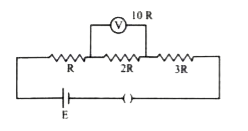
6%
18.5%
11.76%
15%
The correct Answer is:C
True voltage across 2 R is V=2R6RE=E3
When voltmeter is connected R.=2R×10R2R+10R=53R
∴ P.D. cross 2R will be v.=5/3RR+53R+3RE=517E
percentage cross = Δvv×100=517E−13E1/3E×100
=217E×100=11.76%
Similar Questions
A battery of emf E is connected in series with three resistances R, 2R and 3R. The voltage across 2R is measured with a voltmeter whose resistance is 10 R. What is the percentage error in the reading?
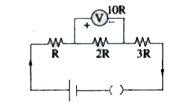
View SolutionA battery of emf E is connected with there resistance R,2RandR in series. The voltage across 2R is measured with a voltmeter whose resistance a 10R .What is the percentage error ?
View Solution
Knowledge Check
An ammeter, voltmeter and a resistor are connected in series to a cell and the readings are noted as I and V. If another resistor R is connected in parallel with a voltmeter, then
AI and V increaseBI increasesCI and V will remain sameDI decreasesA battery of emf E and internal resistance r is connected to a variable resistor R as shown in figure. Which one of the following is true ?
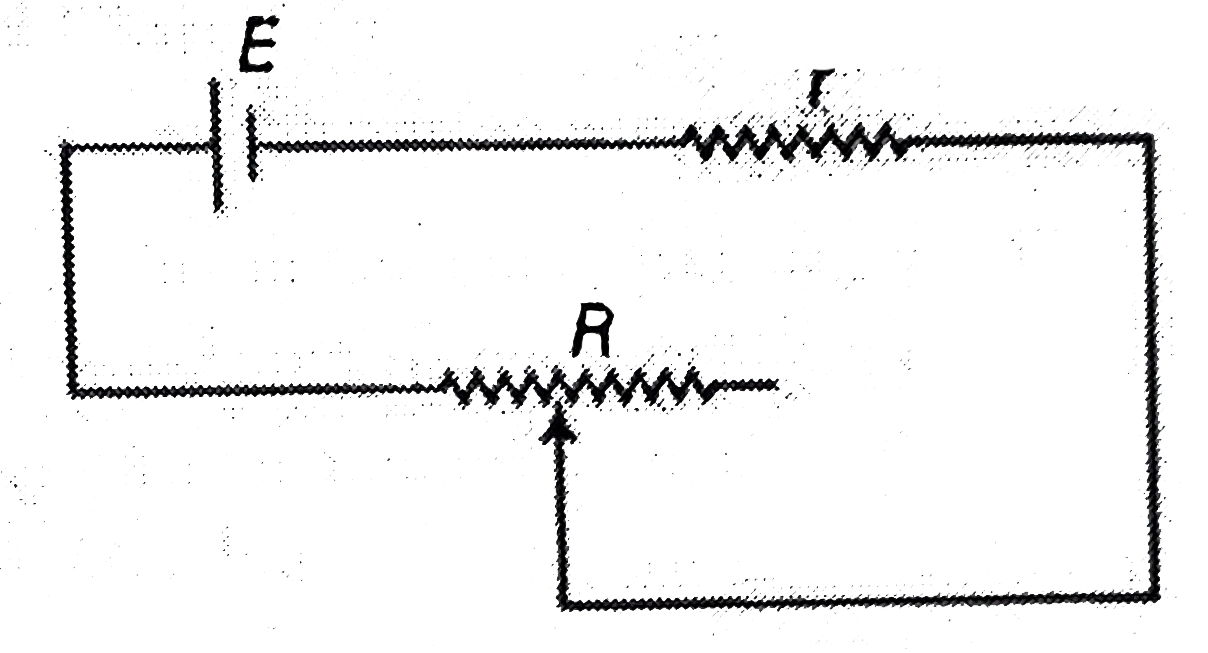 APotenital difference across the terminals of the battery is maximum, when R=rBPower delivered to the resistor is maximum when R=rCCurrent in the circuit is maximum when R=rDCurrent in the circuit is maximum when R>>r
APotenital difference across the terminals of the battery is maximum, when R=rBPower delivered to the resistor is maximum when R=rCCurrent in the circuit is maximum when R=rDCurrent in the circuit is maximum when R>>r
A parallel combination of an 8Ω resistor and an unknown resistor R is connected in series with a 16Ω resistor and a battery. This circuit is then disassembled, and the three resistors are then connected in series with each other oand the same battery. in both arrangements, the current through the 8Ω resistor is the same. What is the unknown resistance R?
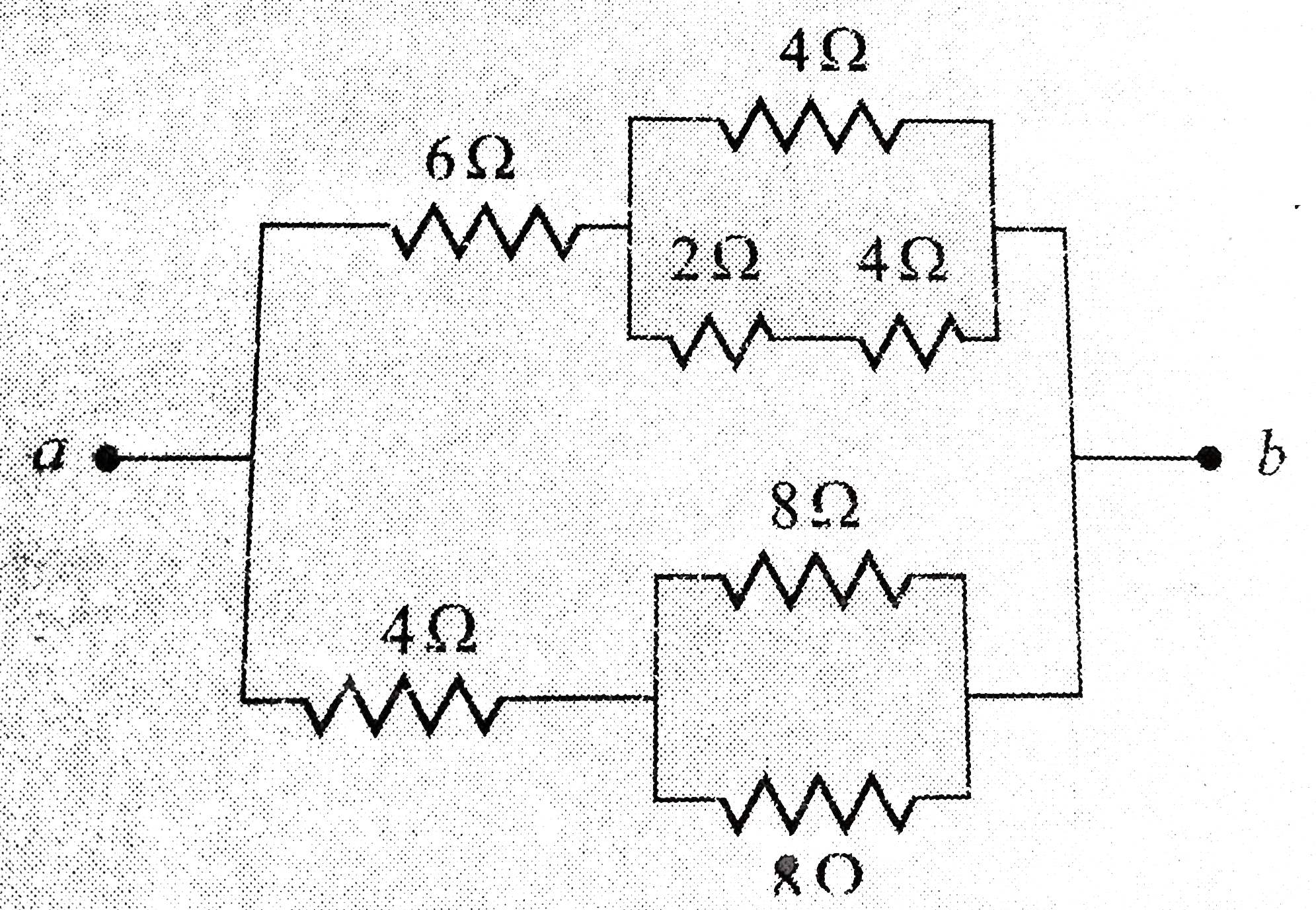
View SolutionA parallel combination of an 8Ω resistor and an unknown resistor R is connected in series with a 16Ω resistor and a battery. This circuit is then disassembled, and the three resistors are then connected in series with each other oand the same battery. in both arrangements, the current through the 8Ω resistor is the same. What is the unknown resistance R?

View SolutionAn ammeter, voltmeter and a resistor are connected in series to a cell and the readings are noted as I and V. If another resistor R is connected in parallel with a voltmeter, then
View SolutionA voltmeter connected in series with a resistance R1 to a circuit indicates a voltage V1=198V. When a series resistor R2=2R1 is used, the voltmeter indicates as voltage V2=180V. If the resistance of the voltmeter is RV=900Ω, then the applied voltage across A and B is

View SolutionA voltmeter connected in series with a resistance R1 to a circuit indicates a voltage V1=198V. When a series resistor R2=2R1 is used, the voltmeter indicates as voltage V2=180V. If the resistance of the voltmeter is RV=900Ω, then the applied voltage ( in volt ) across A and B is

View SolutionThree resistors R1=3kΩ,R2=2kΩandR3=5kΩ have been connected to a constant current source as shown in figure. The current source supplies current I=2mA to the circuit. A voltmeter with RV=6kΩ internal resistance is connected, as shown, to measure the potential difference across R1.
(a) Find the percentage error in the measurement of potential difference (V1) across. R1 caused due to finite resistance of the voltmeter.
(b) If positions of R2andR3 are interchanged will the percentage error in measurement of V1 increase or decrease ?
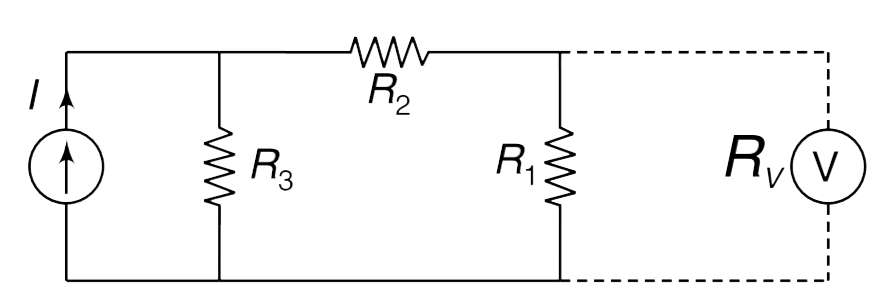
View Solution
